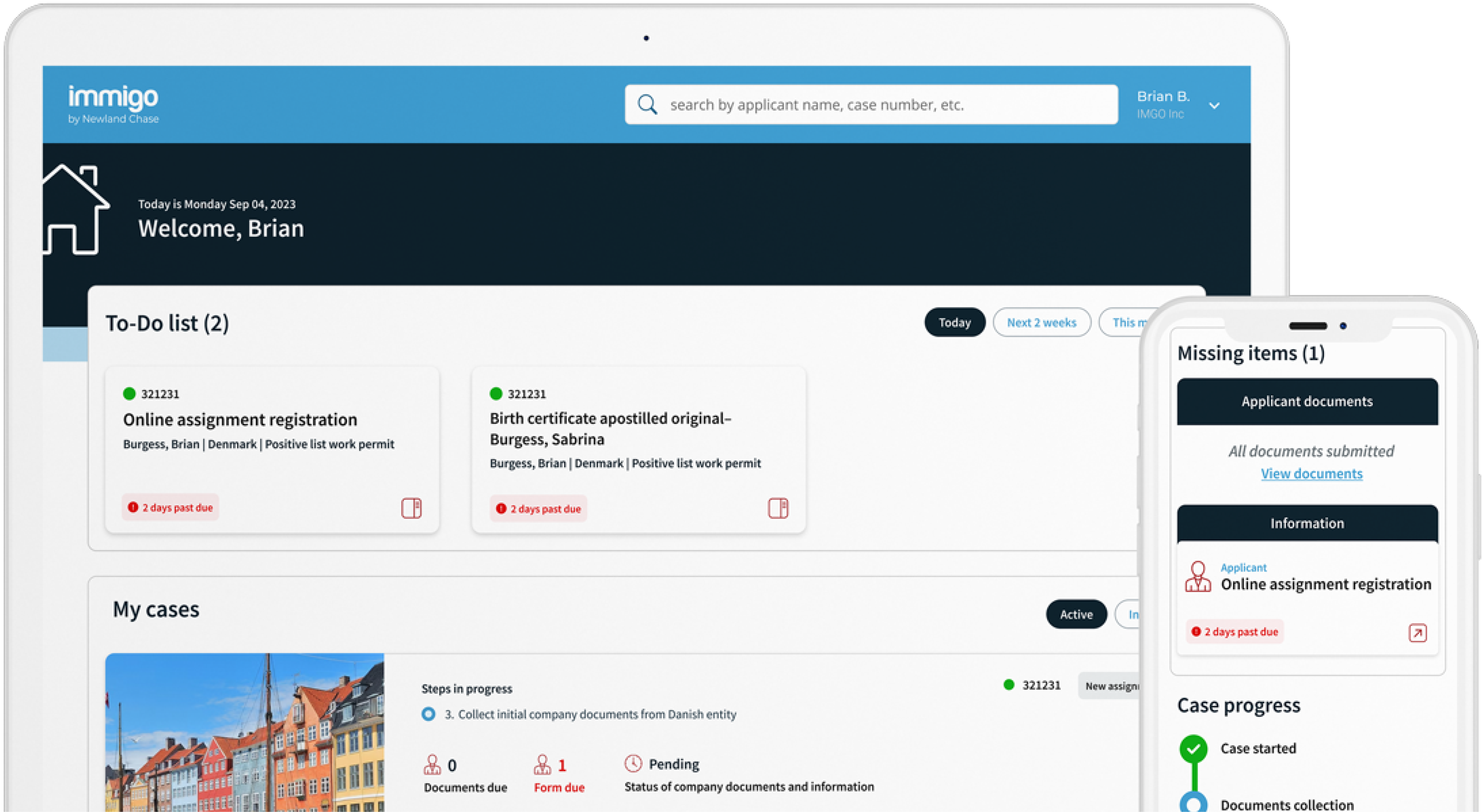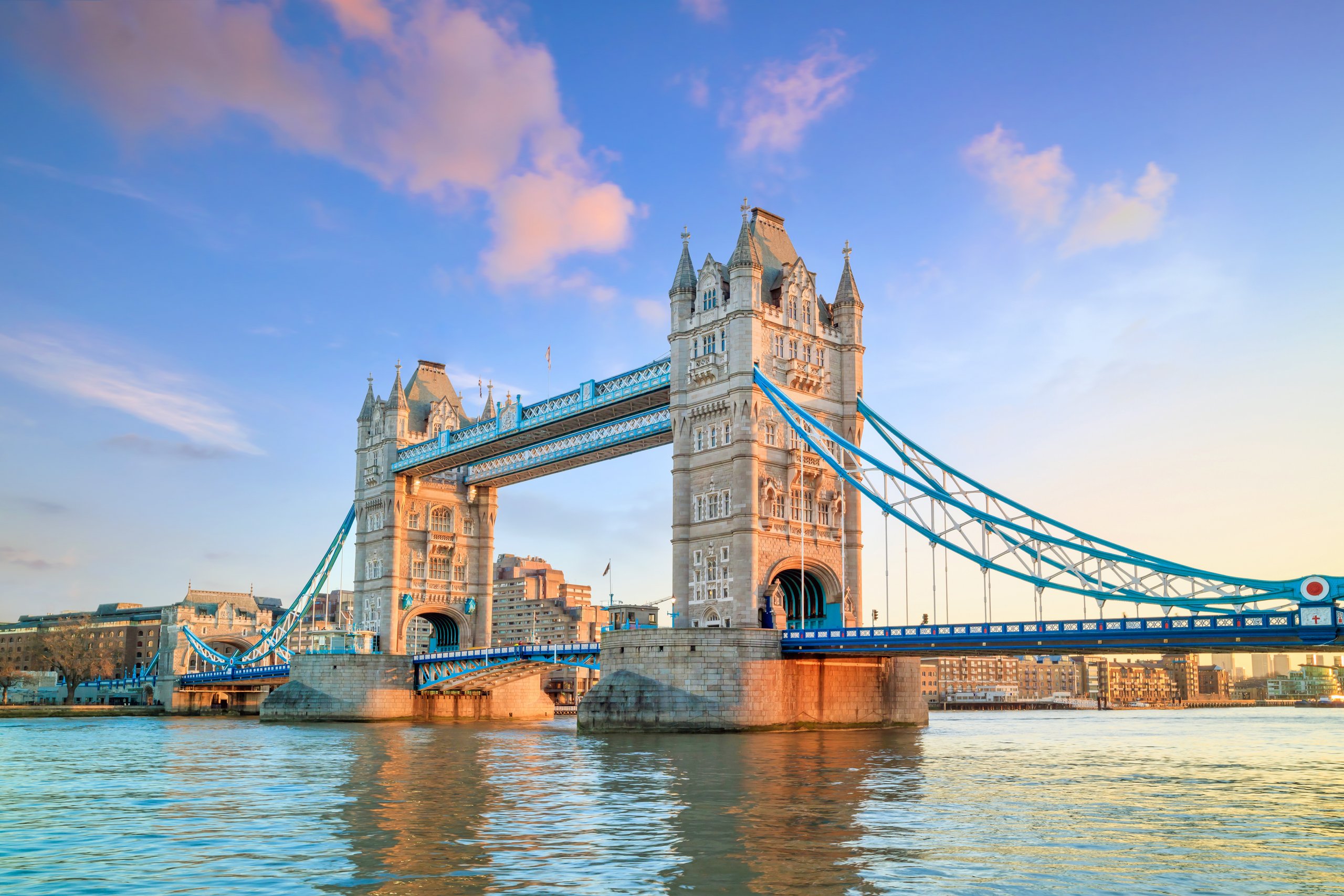Get The Visibility Your Company Needs
Reduce compliance risks and mobility costs while managing individual and project-related travel with ImmiSMART: the solution that unifies your travel and mobility programs.
The Expat Relocation Guide to Mexico City
December 27, 2023
From its affordable cost of living to its vibrant cultural scene, Mexico City has long been a popular expat destination. And with the current rise of remote work, even more young professionals and families are decamping to Mexico’s capital city to live and work.
It’s easy to see why it’s such an expat haven. The cost of living in Mexico City can be considerably lower than in other North American cities, allowing expats to enjoy a high standard of living on a modest budget. It also boasts a robust job market with opportunities in various industries, including finance, tech, and creative sectors. As one of the biggest economic hubs in Latin America, the presence of multinational corporations and a growing startup scene make it a viable destination for career growth and advancement.
Additionally, expats seeking a city with a rich cultural heritage and diverse culinary scene will fall in love with what Mexico City has to offer. Expats can immerse themselves in a city brimming with history, art, and architecture, from ancient Aztec ruins to world-class museums. Boundary-pushing, five-star restaurants sit side-by-side with some of the best street food in the world.
The city’s neighborhoods offer a mix of modern amenities and historical charm, catering to different lifestyle preferences and budgets. Furthermore, the city’s welcoming atmosphere and strong expat community make it easy for newcomers to adapt and forge connections.
With its unique blend of affordability, professional opportunities, and cultural richness, Mexico’s capital stands as an enticing choice. This expat guide to Mexico City will help you prepare for your new life here, covering everything from navigating health care, to how to find new friends and become part of the community.
Mexico City fast facts
- Population: 9.2 million (Greater Metro Area: 21.8 million)
- Currency: Mexican peso (MXN; $ or Mex$)
- Language: Spanish
- Time zone: CST
- Climate: Subtropical highland
- Emergency number: 911
Mexico work visas
If you’re planning to move as an expat, Mexican immigration officials require a visa to legally work and/or reside long-term. For work visas, prospective expats must first get a work permit from the National Immigration Institute through their employer. Once an employer has obtained the work permit, expats can then apply for the appropriate work or temporary-residency visa through the nearest Mexican consulate.
While Mexico offers a variety of short- and long-term visas for working and living in Mexico, the Temporary Resident Visa is a popular option. This short-term residency visa allows foreign nationals to live and work in Mexico for up to four years, after which you can apply for permanent residency if desired.
You can learn more about different Mexico work and residency visas, as well as how to apply for them, here.
The cost of living in Mexico City
There’s been an influx of digital nomads living in Mexico since remote work became more prevalent in the early 2020s, and its largest city is a popular option. With a lower cost of living than the United States, even modest salaries in foreign currencies, like US dollars, go much further here.
The average monthly salary in Mexico City is Mex$44,600. However, as mentioned above, many expats choose to live here while working for international or foreign companies.
From housing to groceries, here are the average costs per month in Mexico City, listed in US dollars.
- Rent for a one-bedroom apartment in the city center: $822
- Home asking price: $202,000
- Cost of living for family of four: $2,672 (without rent)
- Cost of living for one person: $808 (without rent)
- Internet: $27
- Utilities (gas, water, electric): $52
- Transit: $20
- Groceries: $200–300 per person
The best neighborhoods in Mexico City for expats
With some 350 distinct neighborhoods, the diversity and unique character of Mexico City’s many districts is one of its top draws for expats.
You can choose between hip, easily walkable districts in the city center, full of dining, shopping, and late-night entertainment, or laid-back, family-friendly areas close to great schools. But if you haven’t had a chance to visit Mexico City before moving or are just starting to do your research about where to live, it can be hard to know what area is best for you and your family.
Here’s a rundown of some of Mexico City’s top expat neighborhoods.
Best for young professionals
Polanco: Known for its well-heeled atmosphere, safety, and proximity to business districts, Polanco is one of Mexico City’s top expat districts. Home to embassies, upscale shopping, and fine-dining establishments, expats appreciate its walkability and access to parks and cultural attractions.
Condesa and Roma: In recent years, these neighboring areas have emerged as two of Mexico City’s most trendy areas to set down roots. Known for their bohemian charm, tree-lined streets, and thriving arts and food scene, expats are drawn to the European-style architecture, cafes, and the sense of community.
Santa Fe: Located in the western part of the city, Santa Fe is a modern, business-oriented neighborhood. It’s ideal for expats working in the corporate sector, thanks to its proximity to major companies, shopping malls, and luxury apartments.
Coyoacán: This historic neighborhood offers a more relaxed pace of life while still providing access to cultural landmarks, like the Frida Kahlo Museum. Coyoacán has a welcoming atmosphere and is popular among expats seeking a mix of tradition and modernity.
San Ángel: Known for its colonial architecture and cobblestone streets, San Ángel is a peaceful and picturesque neighborhood with an artistic vibe, attracting expats who appreciate a tranquil atmosphere and cultural events.
Narvarte: Offering a mix of traditional Mexican lifestyle and modern amenities, this up-and-coming neighborhood is known for its affordability and growing expat community, making it an attractive option for those looking for a more budget-friendly lifestyle.
Best for families
Interlomas: Located in the Huixquilucan municipality just outside Mexico City, Interlomas is known for its modern housing developments and international schools, like the British American School and the Woodlands School. It offers a suburban lifestyle with easy access to the city.
Pedregal: Pedregal de San Ángel, often referred to as “El Pedregal,” offers a serene and exclusive atmosphere. It’s home to the Peterson Schools, which provide a reputable international education in a tranquil setting.
Bosques de las Lomas: Known for its gated communities and family-oriented amenities, this upscale neighborhood is home to the Lomas Altas campus of the Westhill Institute and the Churchill School, both of which offer English-language education.
Lomas de Chapultepec: This upscale residential area hosts prestigious schools, like the Greengates School and the German School (Colegio Alemán), making it a prime choice for expat families seeking a high-quality education for their children.
Education in Mexico City
Expats with school-age children moving to Mexico City have a mix of public or private schools to choose from. However, as Spanish is the primary language in Mexican schools, many expats prefer to send their kids to international and bilingual schools offering instruction in English or other languages.
Catering to the city’s large expat community, Mexico City boasts several prestigious international schools. These schools follow international curricula (such as IB, American, British, or French) and offer a global educational experience, as well as Spanish lessons and programs teaching children to speak Spanish if they don’t already.
These schools typically have smaller class sizes, making it more competitive to gain a place in the school. Depending on timing, it could be important to plan ahead and potentially apply before your move to ensure your kids are set up in a new school upon arrival.
International schools
These are some of Mexico City’s top international schools:
The American School Foundation (ASF): ASF is one of the most well-known international schools in Mexico City, offering an American-style curriculum, English-language instruction, and a wide range of extracurricular activities.
The British American School (BAS): BAS provides a British-style education and is known for its academic excellence. It follows the British National Curriculum and offers programs for students from preschool to high school.
Greengates School: Known for its rigorous academic standards and diverse student body, Greengates is an international school that offers a bilingual program (English and Spanish) with an International Baccalaureate (IB) curriculum.
The Peterson Schools: The Peterson Schools consist of several campuses in Mexico City, including the Peterson School and the Peterson Institute. They offer a bilingual education with both American and Mexican accreditations and are known for their strong academic programs.
How to build community in Mexico City
Thanks to its large and active expat community, Mexico City newcomers can quickly find acceptance and make friends from around the world. But how do you make those connections and start building a new social circle? Here are some ways new expats can put themselves out there once they arrive in Mexico City:
Learn Spanish: If you want to meet more locals and expats and connect to Mexican culture, take a Spanish class to learn the language. As a culturally diverse city, Mexico City has frequent language-exchange events, offering an opportunity to improve your Spanish while connecting with locals. Many language schools, cultural centers, and expat meetups organize language-exchange activities. Mexico City Language Exchange and Meetup language groups let you join larger groups, while Tandem can connect you with individual language partners if you prefer to practice with just one partner first.
Expat Groups and Clubs: Mexico City offers a vibrant expat community, which you can connect with through online and in-person expat groups, like InterNations, Foreigners & Expats in Mexico City, and American Expats/Friends Living in Mexico City.
Coworking spaces: Due to Mexico’s digital nomad visa, large waves of remote workers have been moving into Mexico City in recent years. If you’re a remote worker or freelancer who works from home and doesn’t go into an actual office, it can be tough to meet people. Joining coworking communities, like Publico, SoHo House, and WeWork (which has multiple locations around the city), can help you link up with fellow professionals and locals via networking events and casual hang-outs.
Join different clubs and hobby groups: Love sports? Big reader? No matter your interest or hobby, there’s most likely a club or group in Mexico City dedicated to it. You can find different groups and clubs through expat networks. This guide from a CDMX expat can also help you learn more about your options to meet new people who share similar interests.
Navigating health care in Mexico City
Another reason Mexico City is a popular expat destination is its high-quality affordable healthcare. Millions of people travel to Mexico every year for medical tourism, taking advantage of top-notch care and facilities at far more affordable rates than neighboring countries. This bodes well for expats, as they’ll be living in a city with excellent hospitals, well-trained doctors and staff, and modern, well-equipped facilities.
Furthermore, medical costs in Mexico City are generally lower than in other North American or European countries. Routine doctor’s visits, prescriptions, and minor procedures are often quite affordable. However, the cost of major medical procedures or surgeries can vary, so having health insurance is essential.
Types of healthcare
Mexico City has both public and private healthcare systems. The public, universal healthcare system is available to both Mexican citizens and legal expats. However, most expats often opt for private healthcare, due to shorter wait times, better facilities, and English-speaking staff.
While many healthcare professionals in Mexico City speak English, it’s still advisable to learn some basic medical Spanish or have a translator or bilingual friend accompany you to medical appointments.
Expats are strongly advised to have private health insurance to cover medical expenses. Various insurance providers offer policies tailored to expats living in Mexico.
Top hospitals in Mexico City
Mexico City has numerous world-class private hospitals and clinics that expats can use as needed. Some well-regarded facilities include ABC Medical Center, Hospital Ángeles, and Médica Sur, which offer a wide range of medical specialties and English-speaking staff.
Banking and money in Mexico City
Opening a bank account in Mexico City as an expat is a relatively straightforward process, but there are some important things to know and consider.
Both short-term and long-term expats can open bank accounts in Mexico, but you’ll need to show proof of residency in order to open a bank account in Mexico City. Some international banks may have different policies for residents and non-residents.
Mexico City has numerous banks, both local and international, to choose from. This means you can open accounts with banks you have pre-existing accounts with or start anew at a local bank. Some of the well-known banks in the city include BBVA Bancomer, Santander, Citibanamex, HSBC, and Scotiabank. Each offers different services, account types, and fees, so do some research beforehand to find the best option for you.
When opening a bank account, you’ll likely need to bring the following documentation proving your identity and residency in Mexico City:
- Valid passport
- Valid visa or residency card
- Proof of address in Mexico City (e.g., a utility bill or rental agreement)
- Some banks may also require a Mexican tax identification number (RFC), which you can obtain from the Mexican Tax Administration Service (SAT).
Foreigners and expats need to open bank accounts in person as opposed to online, so you’ll need to go to a local branch of your new bank to start the process.
Getting around in Mexico City
Given its vast size and bustling traffic, navigating Mexico City can be an adventure for expats. You can explore far-out neighborhoods with public transit or traverse your home turf in highly walkable, pedestrian-friendly central areas, like Roma and Condesa. Here’s what you need to know about getting around the city.
Driving in Mexico City
If you want to drive in Mexico City, you’ll either need a Mexican drivers license or a valid driver’s license from a different country. For some countries, like the United States, a valid driver’s license is sufficient to drive legally in Mexico, while in others, you’ll also need an international driver’s license.
In order to get a Mexican drivers license, you’ll need to provide your passport and Mexican visa or residency card, as well as appear at the local Transportation Secretary’s office for a written and practical test.
However, due to chaotic and congested traffic and sparse parking, many expats prefer to bike, walk, or use the city’s mass-transit system. Programs like EcoBici, a bike-sharing program, have popped up in recent years to improve alternative ways to get around the city.
Mass transit
Mexico City has an extensive and affordable public-transportation system consisting of subway trains, buses, rapid transit buses, and trolleybuses. Fares can be paid in cash, but if you plan on living in Mexico City for a while, it’s best to get a reloadable card (Tarjeta Ciudadana) for seamless travel on public transport.
Taxis are also readily available in Mexico City, but it’s essential to use official taxi services from established companies or apps like Uber or DiDi to ensure safety and avoid overcharging.
Things to know about living in Mexico City
Along with the above essentials about navigating daily life in Mexico City, these tips will also help new expats adjust to any potential culture shocks:
Punctuality: Mexicans often have a more relaxed attitude toward punctuality, and meetings may start a bit later than scheduled. It’s a good idea to be patient and adapt to the local concept of “Mexican time”.
Safety: Is Mexico City safe? You’ve likely encountered this question a lot, due to media coverage about issues with crime in the Mexican capital. As with many other major cities around the world, crime can be a problem in certain areas or late at night. But as long as you’re aware of your surroundings and take precautions in certain areas, you’ll find Mexico City to be a safe, comfortable place to live.
Personal space: Mexicans tend to have a closer sense of personal space compared to some cultures. Don’t be surprised if people stand closer in conversations or if there’s physical contact during interactions, like pats on the back or hugs.
Tipping: Tipping is customary in Mexico City, and it’s appreciated in restaurants, bars, and for various services. A standard tip is around 10% to 15% of the total bill.
Weather: Mexico City’s subtropical highland climate is another one of its main draws, creating pleasant weather throughout the year. Expect tropical and hot weather during the summer, while winters are mild with daytime temps in the 60s and 70s. You don’t need to own a ton of cold-weather clothing because of this, but will likely need some sweaters and cooler-weather clothing during winter.
Gestures and body language: Non-verbal communication is important in Mexico. Avoid pointing with your index finger; it’s considered impolite. Instead, use your thumb or the whole hand. Also, nodding can mean both “yes” and “I’m listening,” so clarify when needed.
Preparing for expat life in Mexico City
When it comes to expat life, few cities can match what Mexico’s capital has to offer. In addition to providing visa assistance, an experienced immigration specialist can help you tackle the logistics and navigate the complexities of adjusting to your new home.




